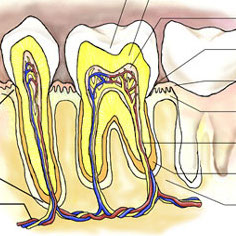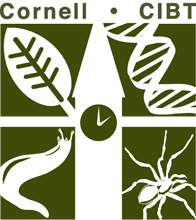Labs & Activities

Blood Vessel Physiology
High School
Human Health
Physical Sciences
Physiology
This lab investigates the physical mechanisms by which our blood vessels function in allowing the circulatory system to do its job. Blood vessels are not simply rigid tubes that conduct blood to our tissues like copper pipes carrying water to our houses, nor are they infinitely extensible balloons that can… read more of the article entitled “Blood Vessel Physiology”

Bovine Uterus Dissection
Animals
High School
Human Health
Physiology
The instructor will dissect an early to mid-pregnant bovine reproductive tract. Data on crown rump length and fetal mass can then be collected for use with CIBT’s Fetal Development Lab. Some appreciation of the form and function of the various organs should be developed by students. This exercise will also… read more of the article entitled “Bovine Uterus Dissection”

Comparative Skulls
Animals
Ecology
Evolution
High School
Middle School
Physiology
What can a skull tell you? A lot! If you look at a skull for clues about its origin, not only can you identify what species it might be from, but you can learn many details about the original animal. In this lab, students will determine what clues to analyze in… read more of the article entitled “Comparative Skulls”

Diffusion
High School
Inquiry/Scientific Method
Molecular Biology
Physical Sciences
Physiology
This lab uses two different sizes of dialysis tubing to represent cellular and organelle membranes. Students design experiments in which they place solutions of iodine, starch, and glucose on different sides of a membrane. The movement of these materials is monitored with the use of indicator solutions. Students are given… read more of the article entitled “Diffusion”

Fetal Development
Animals
High School
Human Health
Physiology
Students will measure pictures of developing cow embryos, or use data from the pregnant bovine uterus dissection, to generate size data. Then they will interpret data from graphs to determine age and mass. Students will compare changes of mass during fetal development with changes in size. Finally, students will contrast developmental… read more of the article entitled “Fetal Development”

Metric Measurement
Animals
Elementary School
Inquiry/Scientific Method
Middle School
Physiology
Recently Updated!
Downloads Metric Measurement (Student Edition)

Phoot Lab
High School
Human Health
Physical Sciences
Physiology
In this lab students will investigate the application of physical principles to a living organism. Students will analyze the foot and its function as a machine by applying lever mechanics to the “walking” foot. Analysis will incorporate anatomical terms for some of the muscles and bones involved in plantigrade motion…. read more of the article entitled “Phoot Lab”

Plant Game
Ecology
High School
Middle School
Physiology
Plants
This exercise helps students think about how plants grow in a fun and enticing manner. Teams of students “grow a plant” composed of “leaves,” “roots,” and “flowers.” The goal of the game is to produce a maximum number of flowers, which is possible only if the students have a good strategy to… read more of the article entitled “Plant Game”

Teeth Unit
Elementary School
Human Health
Middle School
Physiology
Recently Updated!
Students will investigate the characteristics of teeth and what teeth can tell about an animal’s lifestyle: Students will sort and categorize 10 to 12 teeth. Given information about what canines, incisors and molars are, students will identify which teeth are which and why. They will predict which teeth came from… read more of the article entitled “Teeth Unit”

Tell-Tale Heart
Animals
High School
Human Health
Physiology
“The Tell Tale Heart” is an activity during which students familiarize themselves with the structure of the heart through a dissection. They locate the atria, ventricles, and major blood vessels. Through “surgical” procedures, students perform coronary bypass surgery and correct patent ductus arteriosus. Human and dog hearts are compared in terms… read more of the article entitled “Tell-Tale Heart”

